HTMAPODWTTC 14: Mobile Homes and Manufactured Housing
September 7, 2014
We’ve been working on a series of ways that our Traditional City ideas can be implemented immediately, within the context of Suburban Hell as it exists today in the United States. We have also been working on various arrangements that are a lot less expensive than the typical hyperexpensive Suburban Hell SFDR house on a quarter-acre, while providing environments that are dignified and beautiful — maybe, even more dignified and beautiful than the typical upscale McMansion-on-a-cul-de-sac format which can easily cost $500,000+ per house.
Our solutions are intended to be both highly profitable for developers, and also very pleasant places for the people who end up living there, such that it serves as a foundation for an overall lifestyle that is also dignified and beautiful in a great many ways.
September 23, 2012: Corbusier Nouveau 3: Really Narrow Streets With High-Rises
August 26, 2012: Corbusier Nouveau 2: More Place and Less Non-Place
August 19, 2012: Corbusier Nouveau
July 13, 2014: HTMAPODWTTC 13: Getting Other People’s Cooperation
May 18, 2014: HTMAPODWTTC 12: Trailer Parks and Mobile Home Parks
January 20, 2013: HTMAPODWTTC 11: The Diminishing Returns of Suburbia
November 11, 2012: HTMAPODWTTC 10: Let’s Bulldoze a Big Box Shopping Center 2: No, Seriously
July 1, 2012: How To Make a Pile of Dough With the Traditional City 9: Townhouses With Parking
April 22, 2012: How to Make a Pile of Dough With the Traditional City 8: Shared Parking
April 1, 2012: How To Make a Pile of Dough With the Traditional City 7: Let’s Bulldoze a Big Box Shopping Center
August 21, 2011: How To Make A Pile of Dough With the Traditional City 6: Better Than a Thousand Words
July 31, 2011: How To Make a Pile of Dough With the Traditional City 5: The New New Suburbanism
July 17, 2011: How To Make A Pile of Dough With the Traditional City 4: More SFDR/SFAR Solutions
June 12, 2011: How to Make a Pile of Dough with the Traditional City 3: Single Family Detached in the Traditional City Style
May 15, 2011: How To Make A Pile of Dough With the Traditional City 2: A Ski Resort Village
August 22, 2010: How to Make a Pile of Dough with the Traditional City
One such modality that already exists is “manufactured housing.” These are housing units that are typically constructed at some central “factory,” and then transported by flatbed truck to an installation site. They can conceivably be moved again, thus gaining their designation “mobile homes,” but I expect that this hardly ever happens. They are actually mobile only once, from factory to site.
Due to the fact that they need to be transported by truck, they naturally cannot be very wide, which means very long and skinny structures typically. There’s a tradition of “shotgun houses” already in the United States, which continues now in the form of “mobile homes.” Sometimes, two prefab halves are transported by truck and then joined at the site, the so-called “doublewide.”
Today, these prefab structures tend to be very cheaply built, and are aimed at a lower-income customer. The idea seems to be to maximize the floorspace/cost ratio. Obviously, if you do this, you end up with the most dismal construction quality possible, and these structures, typically not very attractive to begin with, deteriorate rapidly into something that is plain ugly. The combination of piteous construction quality, little attention to aesthetics, the low incomes of most inhabitants, plus the generally slovenly habits of many inhabitants which leads them to want to maximize floorspace with minimum quality, leads to an overall poor reputation for this mode of residence — which is mostly deserved.

Thus, we have the typical dilemma of an American family today: cheap, shoddy, slovenly, with badly-behaved neighbors (mobile home park), or hyperexpensive Suburban Hell with thirty years of debt slavery, which even then is rather depressing and ugly way to live.
However, it doesn’t have to be this way. Obviously, you can have a much better build quality, if you are willing to pay for it. Also, you could have less floorspace, and much higher build quality, for the same price. And, if you are not slovenly by nature, you could probably make it pretty nice with things like facades, patios and porches, painting, trees, gardening etc., with minimal extra expense.
In other words, I want you to imagine a better sort of “mobile home community,” much as we recently imagined a better sort of “trailer park” or “RV campground.”
May 18, 2014: HTMAPODWTTC 12: Trailer Parks and Mobile Home Parks
In that piece, we asked: instead of a community like this:
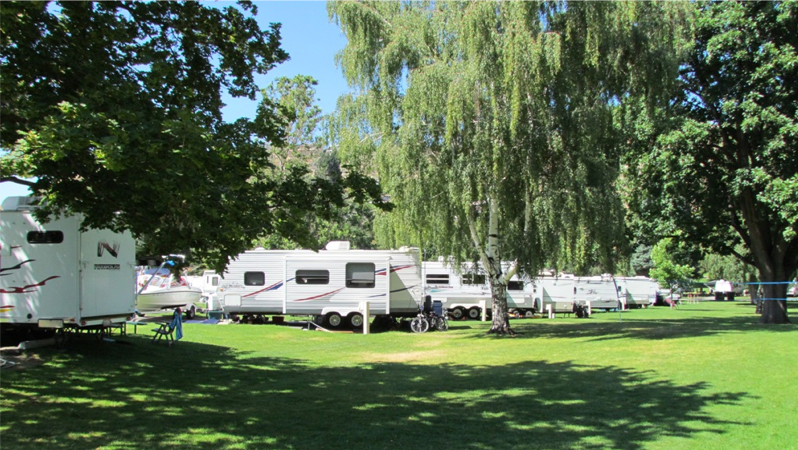
which has structures that look like this:
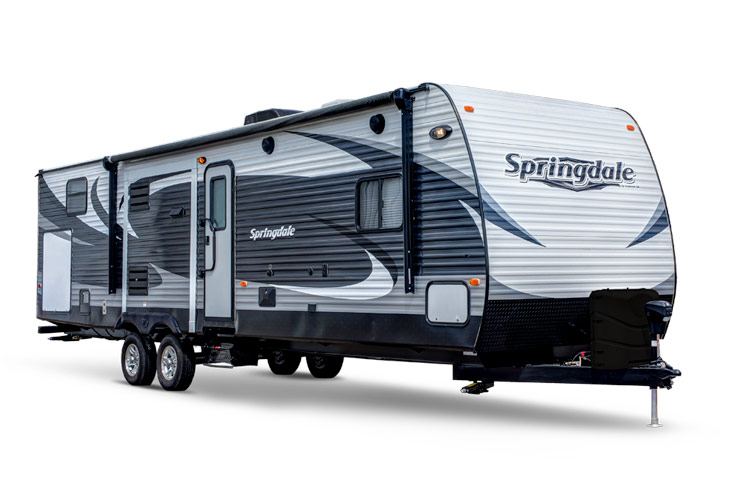
… what if we instead had a functionally similar but much more dignified structure like this?
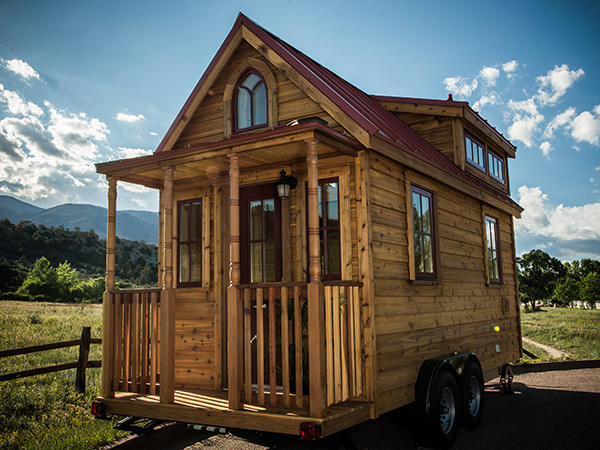
In fact, the “tiny house that happens to have wheels” is much smaller — about half the size — of a typical travel trailer like the Springdale model. That is, genuinely, very small. But, people live in structures like this and quite like it.
Tiny: a Story About Living Small (documentary on Netflix)
Similarly, instead of a neighborhood like this:
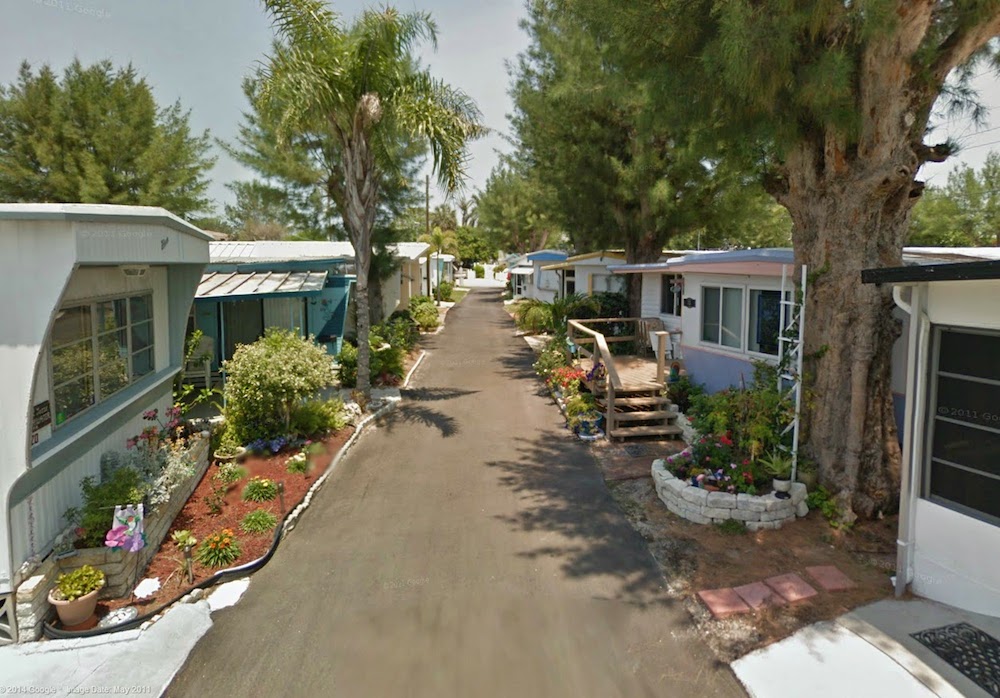
(Mobile home community in Bradenton, Florida)
… with a structure that looks like this:
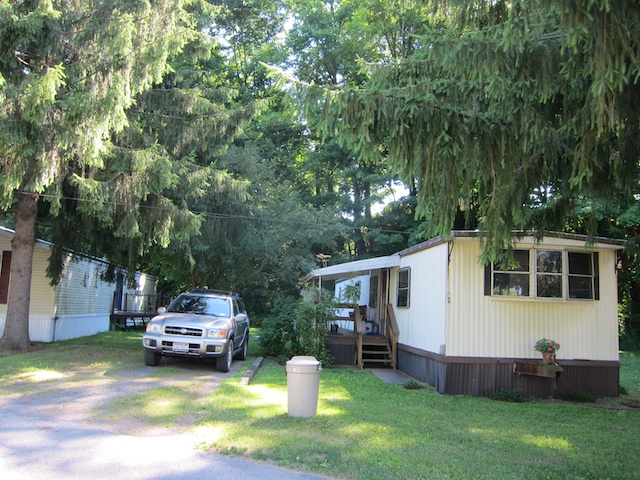
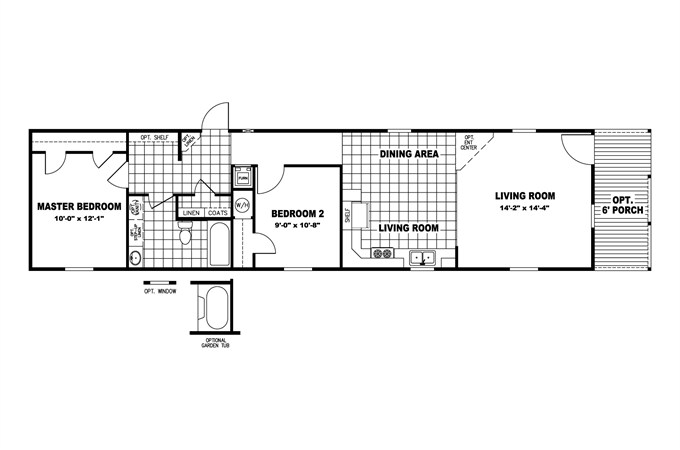
800sf mobile home offered by Clayton Homes.
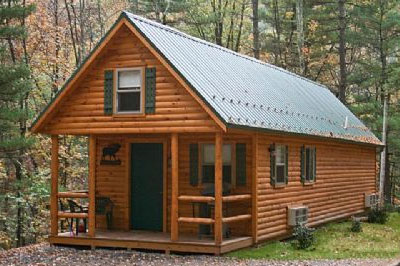
This is a bit rustic, of course, but that is a matter of aesthetics. Obviously, the build quality here is much higher than the dirt-cheap vinyl-sided boxes typical of “manufactured housing.” I would say that the typical “mobile home” is little more than a shipping container with a few amenities, but actually, shipping containers, which need to withstand the rigors of shipping, are rather more sturdily built.
Now, the funny joke is that this “Adirondack Cabin” is, in fact, manufactured housing. It is built in a factory in Pennsylvania and delivered by truck flatbed, by a company called Zook Cabins. Just the same as any other “mobile home.” It has 390 square feet, plus some loft space for more sleeping area or storage.
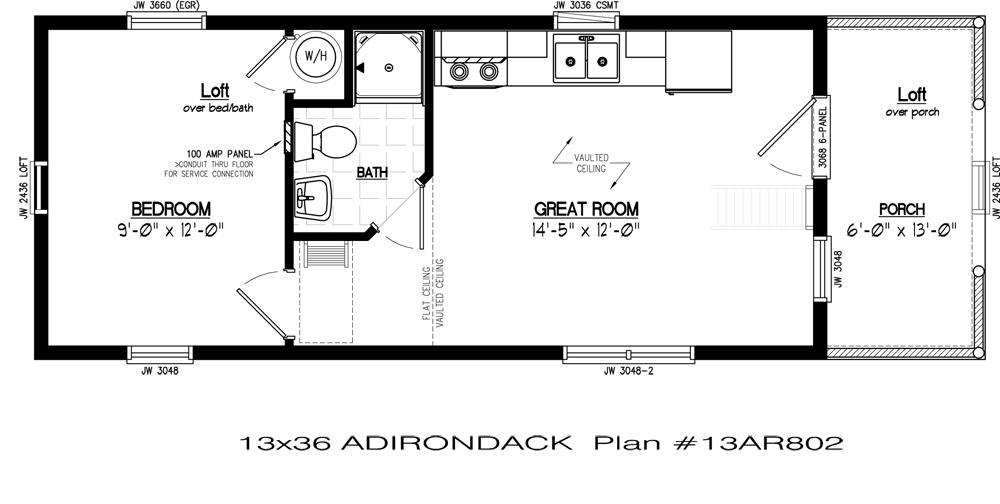
So, we see that, following the pattern of our “tiny houses” built on trailers, this cabin is actually about one-half the size of typical “manufactured housing.” And yet, despite that, due to better build quality and attention to aesthetics, it seems quite dignified and pleasant, while the larger offerings by Keystone Trailers or Clayton Homes seem dismal and shoddy — which, in fact, they are.
This modality offers quite a few advantages to our “tiny houses” built on towable trailers. The most important, of course, is that it can be much bigger, up to “doublewide” size (1600sf+) if you like. But, we can also build quite small, like this Adirondack Cabin as well, and get something that is very beautiful and charming without spending a lot of money. We have a lot of freedom in these things.
Actually, those houses in Bradenton, despite their cheapie construction, look like double-wides. This double-wide 26×54 “Mountaineer Deluxe,” also by Zook Cabins, is 1811 sf.
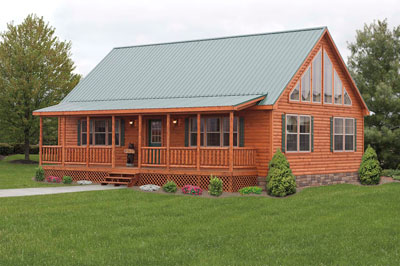
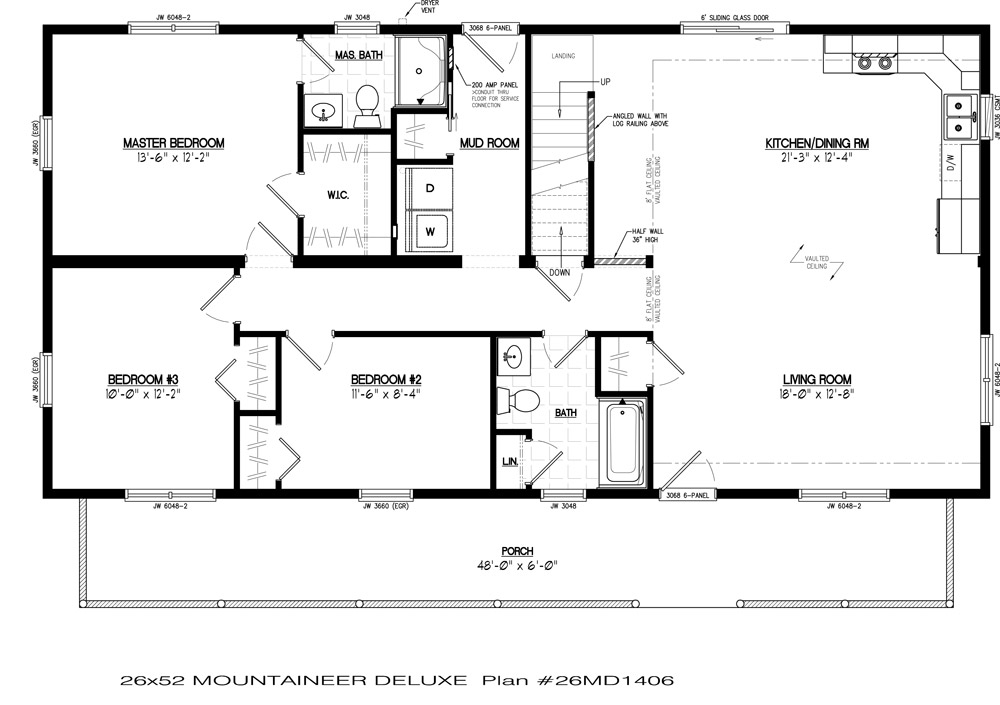
Why use “manufactured housing” at all? Why not just make a similar site-built structure? Of course, this is the way all houses were built, before someone got the idea of moving them around on flatbed trailers.
The short answer is that there is no particular advantage at all. You could build a site-built home of the same sort of character, and you would have a lot more flexibility regarding design and so forth. Making standardized units in a factory might offer some advantages of scale and repetition, but you could even make a house kit, with a building plan and building materials precut in a factory, and just build the house on the site. Indeed, this tradition has been around for a long time.
The “kit house,” with precut lumber, has been around at least since 1916.
http://en.wikipedia.org/wiki/Kit_houses_in_North_America
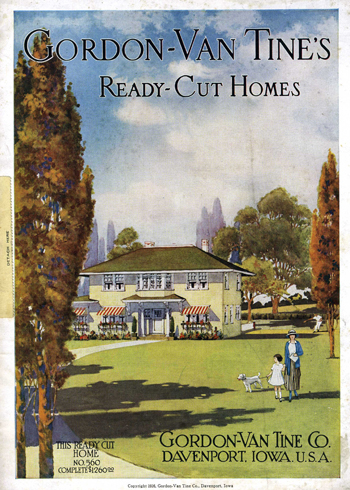
Catalog of Gordon-Van Tine kit homes, 1916
The real advantage of the “manufactured house,” as with the “tiny house” on wheels, is that it allows you to sidestep existing regulations regarding land use. This allows us to have a much higher density, and also include Traditional City elements like the all-important Really Narrow Streets of typically 12-20 feet wide. We already saw that such Really Narrow Streets, one surface from side to side with no sidewalk/roadway segregation, and about 12-20 feet from one “property line” to the other, was already a common feature in existing “RV campgrounds” of the sort where we might put our “Tiny Houses” built on trailers. Oddly, this human-centric 15-20 foot width actually works fine even for getting these very large trailers in and out!
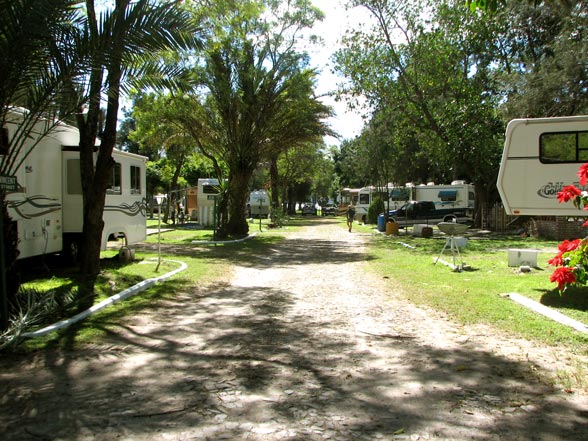
Note how people just naturally adopt the 12-20 foot Really Narrow Street format, in this RV campground for example.
Charlie Gardner, of oldurbanist.blogspot.com, has already written the definitive treatment of how the “mobile home park” format has allowed people to bypass existing regulations, and build much more densely with people-friendly Really Narrow Streets, in places such as Bradenton, Florida as shown above. It is required reading.
http://oldurbanist.blogspot.com/2014/05/mobile-home-impediments-and.html
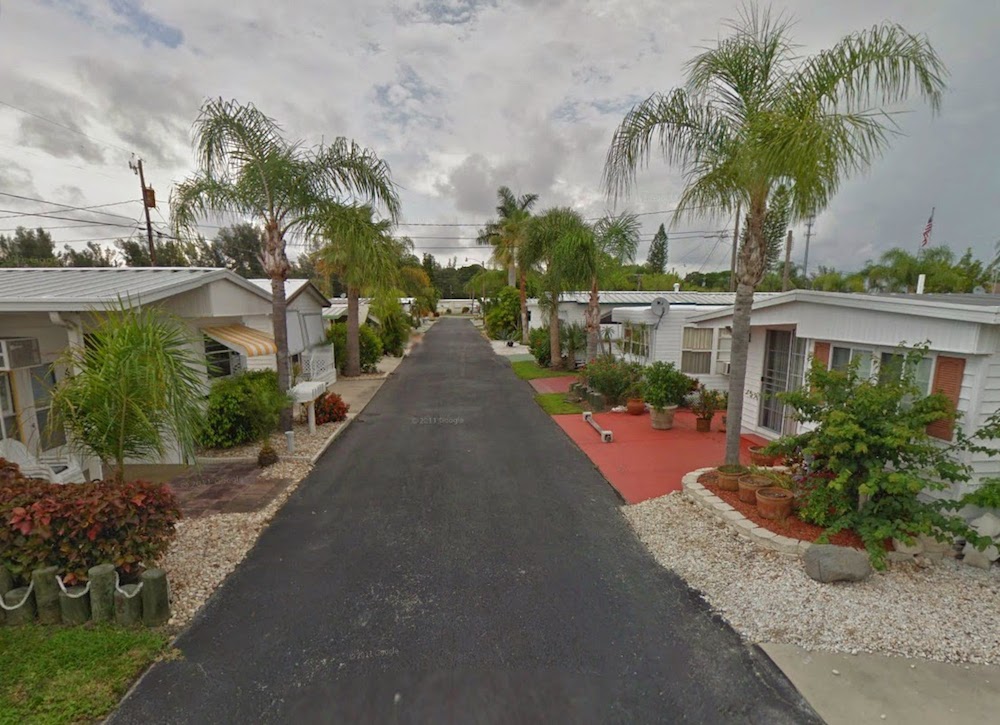
We see that, in the Bradenton example, we have already adopted a Really Narrow Street format of about 12 feet wide here, along with buildings that are quite close together. There’s a bit of front setback, but not a lot. Not much is needed, because, as we can see, the houses face a nice Place for People, a pedestrian street, rather than an automobile roadway. The inclusion of vegetation is a nice point.
October 10, 2009: Place and Non-Place
Indeed, this format comes quite close to the patterns of Japanese SFDR housing that we looked at earlier.
July 31, 2011: How To Make a Pile of Dough With the Traditional City 5: The New New Suburbanism
July 17, 2011: How To Make A Pile of Dough With the Traditional City 4: More SFDR/SFAR Solutions
June 12, 2011: How to Make a Pile of Dough with the Traditional City 3: Single Family Detached in the Traditional City Style
Now, we can see that, just as is the case for a great many Traditional City places worldwide, we have created a very pleasant Place for People, even though density here is quite high. Somehow, there doesn’t even seem to be any offstreet parking for cars here, although this is in a Florida suburb with no trains. I personally am perfectly happy to accommodate the realities of living in Suburban Hell today, and provide offstreet parking for at least one automobile, probably in the form of outdoor side parking. However, amazingly, the people living here in Bradenton seem to be quite willing to give up their cars!
Here’s what this Bradenton community looks like from the air:
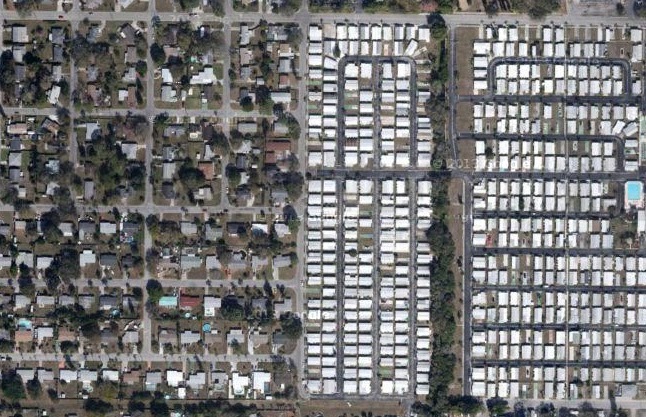
Here we can see that the density really is quite high, for the SFDR format. We are already doing this in the U.S. today! You could even double (!) the density by using single-wides rather than double-wides, but that is a project for another day.
Obviously, if you are building with something like 2000sf plots (1/20th acre), or even 1000sf plots (not so hard with a house with a 400sf footprint), and not consuming a lot of land with oversized Suburban Hell streets of 60-80 feet wide, plus another 20 feet of setback on both sides, then your land costs per unit go way down. In other words, it’s a lot cheaper. Also, if there is an amenity close by, like a beach or train station, then obviously a lot more people can live close to that amenity when density is higher. Ideally, within walking distance, even when pushing a stroller. And, you can walk to that amenity on the human-friendly Really Narrow Streets of the sort in Bradenton, rather than some Suburban Hell catastrophe of six lanes of roaring traffic.
Not surprisingly, something like this already exists. They are “cabin campgrounds,” where you can often find quite a few of these “manufactured home” cabins side-by-side, in rather dense spacing.
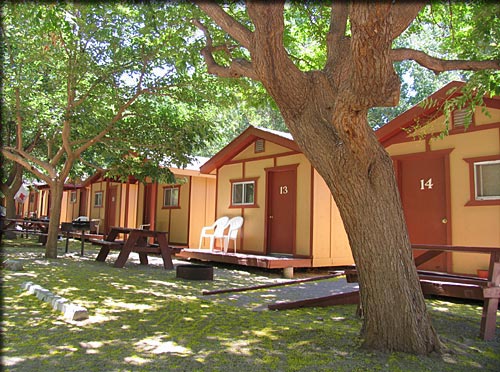
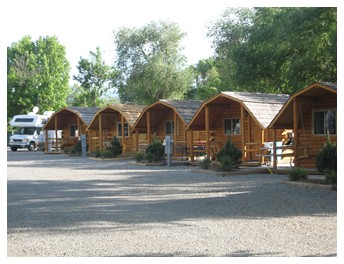
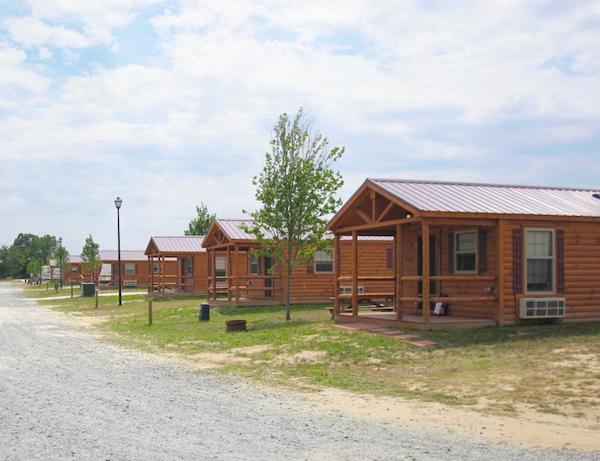
Just as was the case with our “RV campgrounds,” we find many Traditional City elements, notably the Really Narrow street of about 12-20 feet wide without segregated sidewalks, and a general character of being a Place for People rather than a series of giant 19th Century Hypertrophic roadways and parking lots.
Of course, the houses don’t all have to be the same. That’s common for cabin campgrounds, but too homogenous for a permanent residential neighborhood if you ask me.
The first picture is the most pleasing, of course, as it has some lovely mature trees. Oddly, it is also the one with the closest spacing, and highest density!
Now, you could certainly make houses — even flatbed-delivered “manufactured houses” — that are a lot better than Zook Cabins’ best offerings. We already looked at a series of compact house plans, the widest of which is 15 feet wide. This is just about the width of a 13-foot singlewide, so designs like these can easily be done in that format.
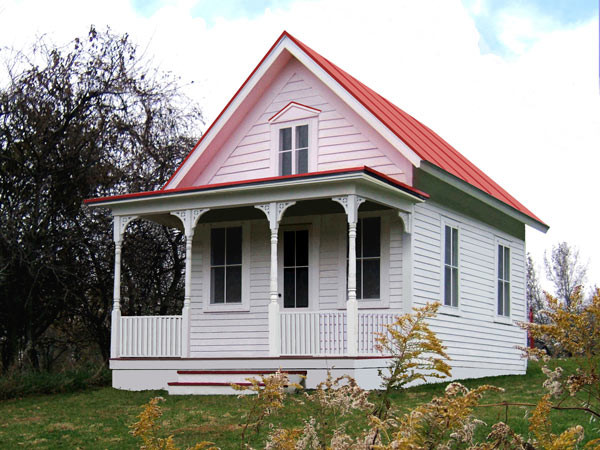
261 square feet.
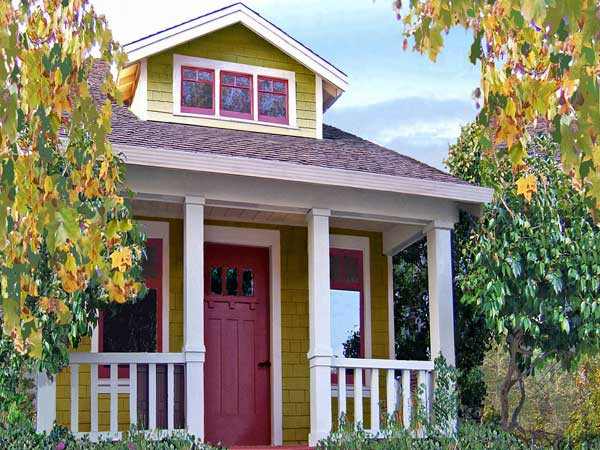
261 square feet.
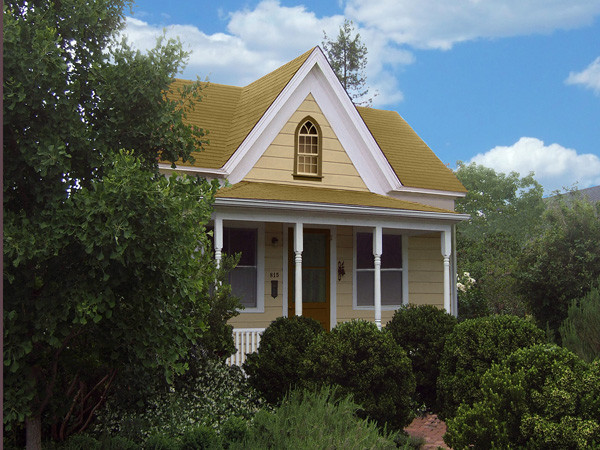
289 square feet.
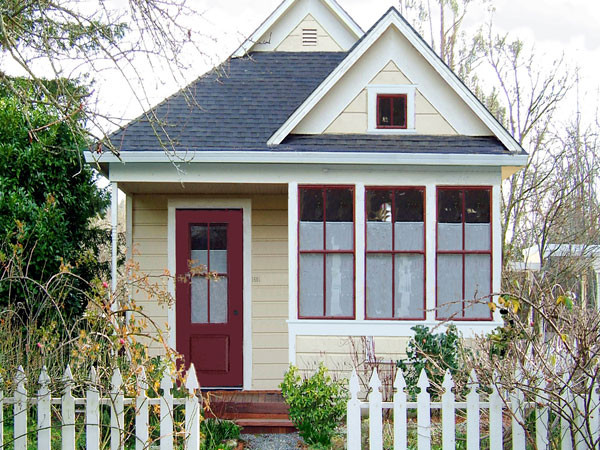
310 square feet.
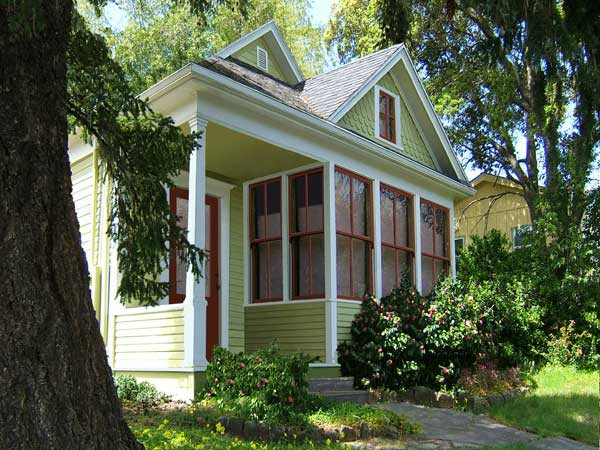
461 square feet.
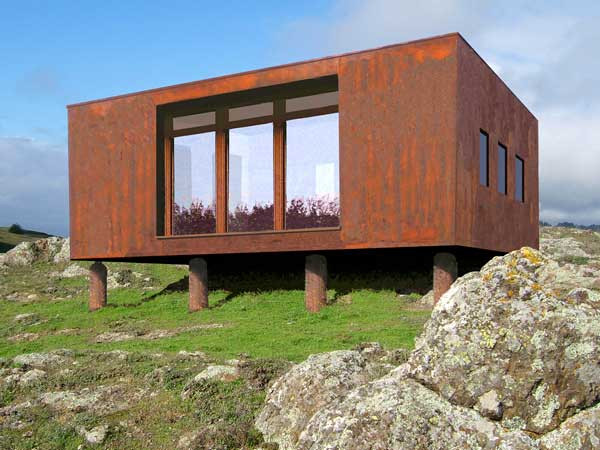
370 square feet.
So, we can see that there is not really anything at all holding us back from making as nice a “manufactured house” as we might like, in a variety of pleasing styles, as long as it fits within the flatbed-able 13 foot width, or doublewide 26 foot width. The only reason we have to bother with this flatbed delivery stuff at all is to be able to sidestep existing regulations regarding site-built homes; but, especially for smaller developers, that might be a very nice way to get these things up and going without having a big to-do with local regulators. I’ve focused here on smaller, sub-500 square foot designs, because I think that is a niche (beautiful and dignified but not too expensive) that needs to be filled; however, as we’ve seen, you can also go to 1500sf+ in this “mobile home” modality.
Let me remind you that even 400sf is still four times larger than those trailer-built “tiny homes” we looked at earlier, which have become very popular among minimalist experimenters. It is also about two times larger than the sheet-metal travel trailers that millions of Americans already live in, full-time, today (at least for part of the year).
Another option is to go to multi-story construction. Yes, you can do this also with “manufactured” homes, known as “modular” homes.
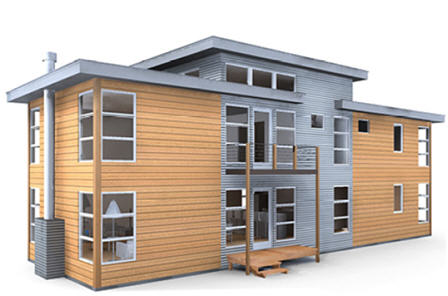
Prefab, modular home from CleverHome
The nice thing here, of course, is that you can go to 1000sf+ without chewing up a lot of land area. If you happen to designate 1000sf plots, then you can have a 500sf footprint, three stories or 1500sf of interior space, and also 500sf of room to use for backyards, parking, etc.
If you had 70% home plots/15% roads/15% shared amenities like parks and squares, 1000sf plots, and 2.5 people per household, that works out to population density of 46,000 people per square mile — with one or two story construction! At this level of density, compared to about 9,000/mile for the denser Los Angeles suburb, you could easily have a lot of neat commercial stuff (bars, restaurants, shops, schools, etc.) within walking distance. Goodbye car dependency — even with one-story SFDR construction. On a broader basis, the population density would probably be more like 30,000/square mile, comparable to many Japanese SFDR neighborhoods, when considering space for commercial areas and things like schools. A 1000sf plot might seem small, but at 25×40, that would be big enough for one of our 400sf “mobile homes” (800sf for two stories), side parking for two automobiles, a front porch and a little backyard too.
Of course, at some point, you’re probably better off going to townhouse, apartment, and even high-rise construction. There’s no particular award given to fitting as many one-story detached houses as you can in an acre. But, we have a longstanding affinity for the single-family detached house in the U.S., as do people in Japan and elsewhere in Asia as well, and this is a way to continue that tradition while also getting all of our TradCity advantages.
Although “mobile home” neighborhoods are normally associated with low-income people who live in dismal, disintegrating boxes of cheapest-possible construction, there are a few (rather notorious) “mobile home parks” where the wealthy and even famous have lived — for example, in Malibu, California, and Montauk, Long Island. So, there’s nothing inherent about this basic format that needs to be shabby, slovenly and dilapidated, or that might not be attractive to even the pickiest people, especially if it is near the beach.
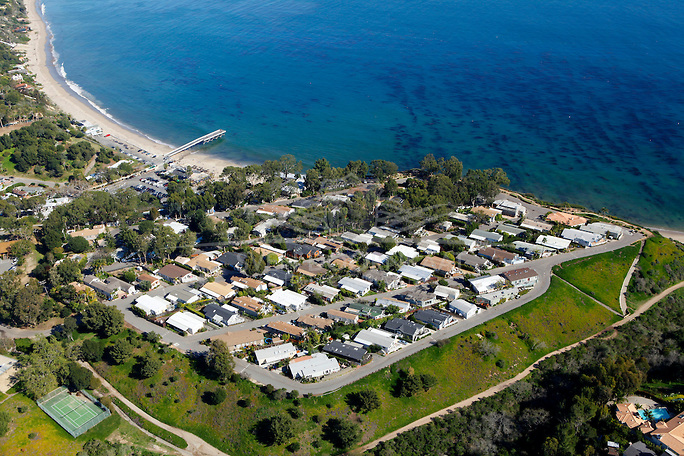
Malibu, California
Aerial photos of the most expensive mobile home park in the United States. Paradise Cove, where PAMELA ANDERSON and MINNIE DRIVER currently live. Currently, there are dozens of trailers for sale at the Mobilehome Park ranging from $350,000 to over $2 million.
© Sven Doornkaat
Paradise Cove, Malibu, California.
“The most expensive mobile home community in the U.S.”
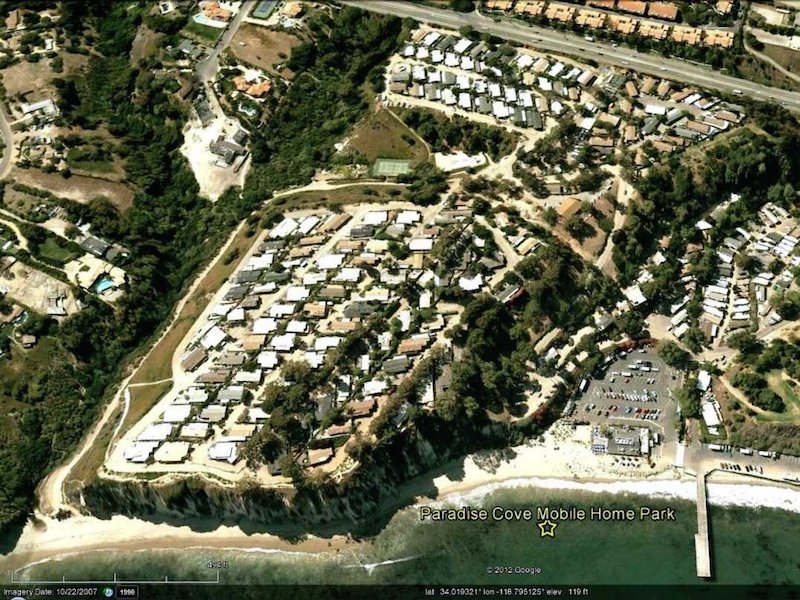
Note the dense spacing, and of course the use of Really Narrow Streets of about 20 feet wide, with little-to-no setback, no sidewalks, no onstreet parking.
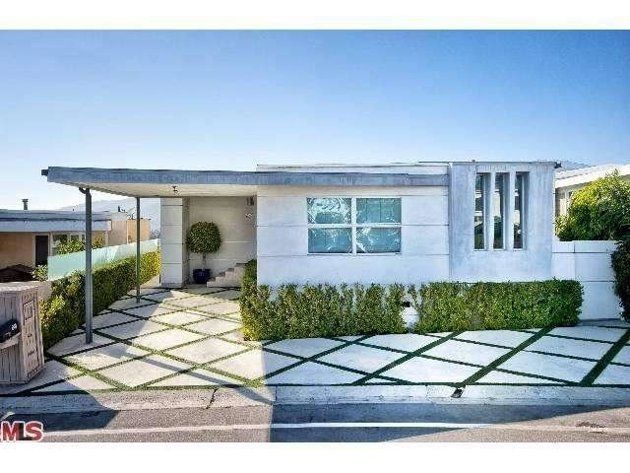
Paradise Cove mobile home. Apparently, this one sold for $2 million at some point. Which is stupid. But, it goes to show that you can be as luxe as you wanna go, within the context of a “mobile home community.”
Apparently Matthew McConaughy, Minnie Driver and Pamela Anderson have lived at Paradise Cove.
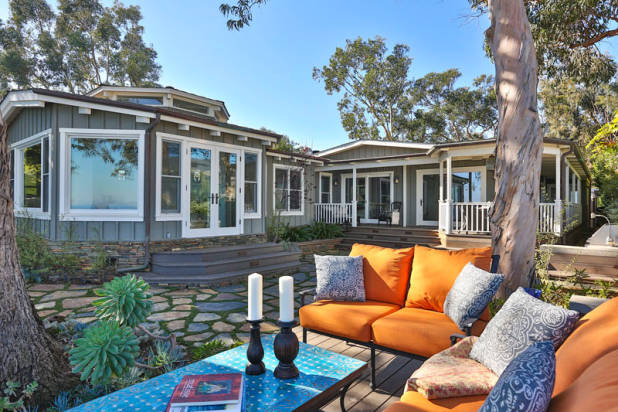
Another “mobile home” at Paradise Cove.
Vanity Fair did an article about Paradise Cove.
http://www.vanityfair.com/hollywood/features/2011/03/paradise-cove-201103?currentPage=1
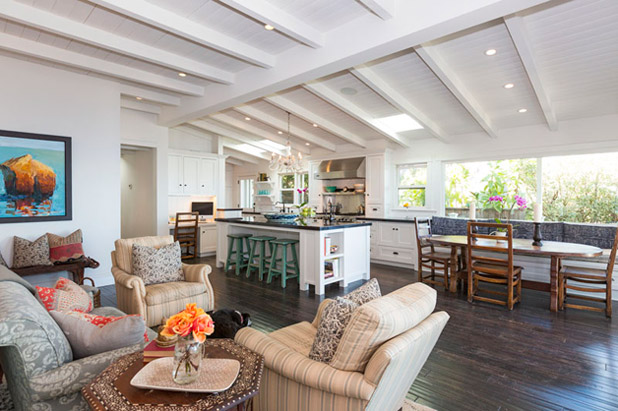
Paradise Cove mobile home interior.
In 1993, Sean Penn lost his house to a wildfire. He bought an Airstream Sovereign trailer, parked it on his land, and lived in it for several years until his house was rebuilt.
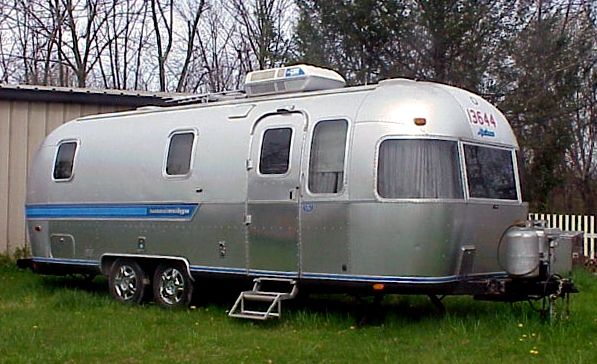
Airstream Sovereign
This is a trailer, not a mobile home. But, it was good enough for an A-List Hollywood actor to live in for several years.
This is about 175sf (6.5×25 interior) I’d guess.
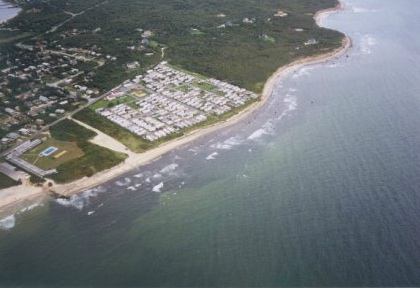
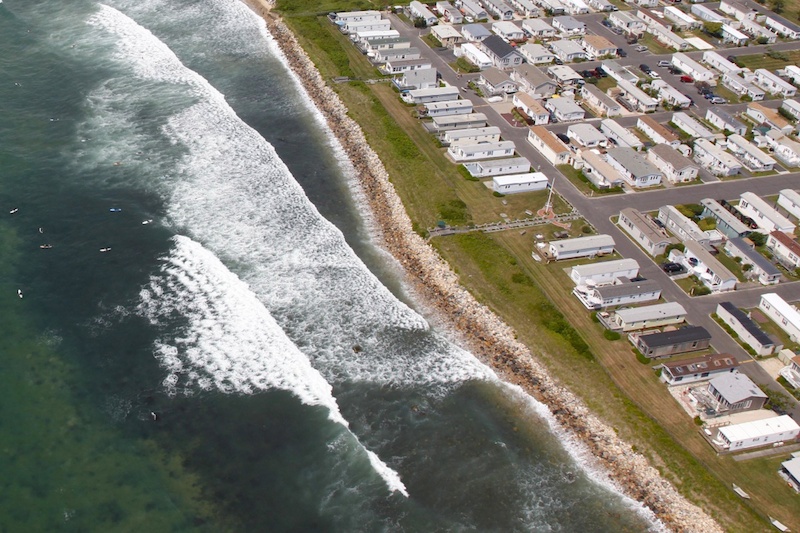
Once again, we see the dense spacing, and also the Really Narrow Streets of about 15-20 feet wide, little-to-no setbacks, no sidewalks, no street parking.
The New York Times did an article on Montauk Shores in August, 2014.
http://www.nytimes.com/2014/08/26/nyregion/trailer-park-on-atlantic-appeals-to-the-rich.html
The small, densely-spaced single-family detached residential pattern is not so common in European Traditional City designs. From Roman and Greek times, if not earlier, the pattern has been for attached townhouses or apartment buildings. I suspect this has something to do with stone and masonry construction instead of wood construction.
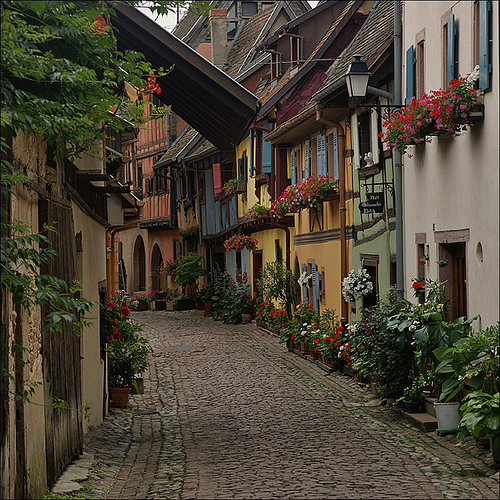
SONY DSC
Our favorite example pic of attached townhouses and Really Narrow Streets, in the European tradition. Eguisheim, France.
Before long, this morphs easily into what amounts to apartment buildings.
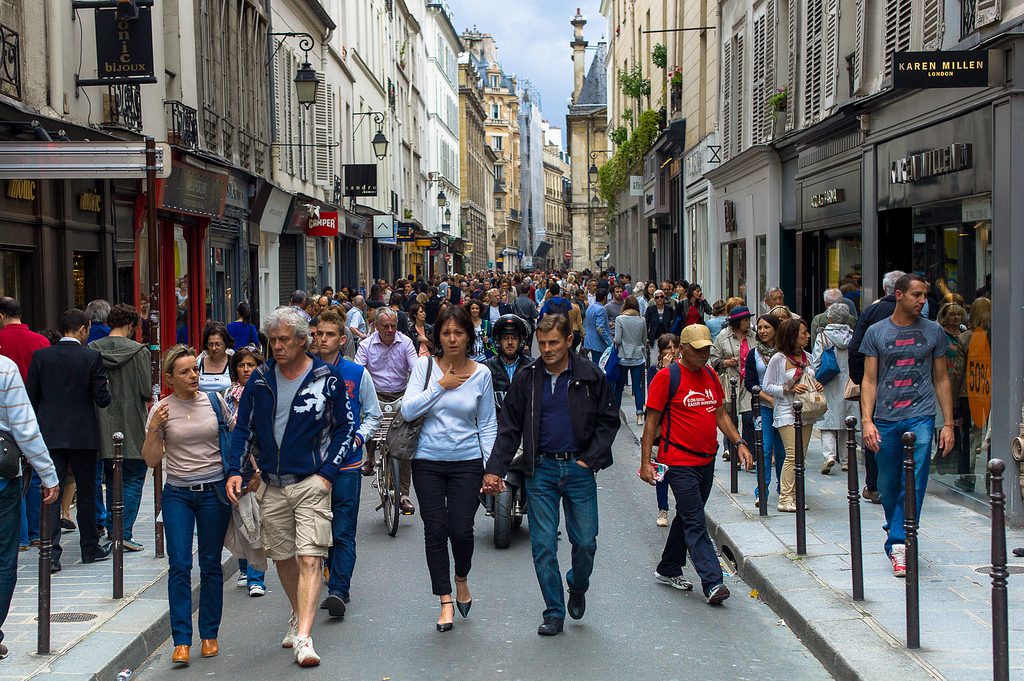
Paris, France.
Europe also has a tradition of detached residences, of course, but mostly in an agrarian format, surrounded by fields. This was adopted by Americans, and eventually became the typical Suburban Hell house surrounded by mowed grass on four sides.
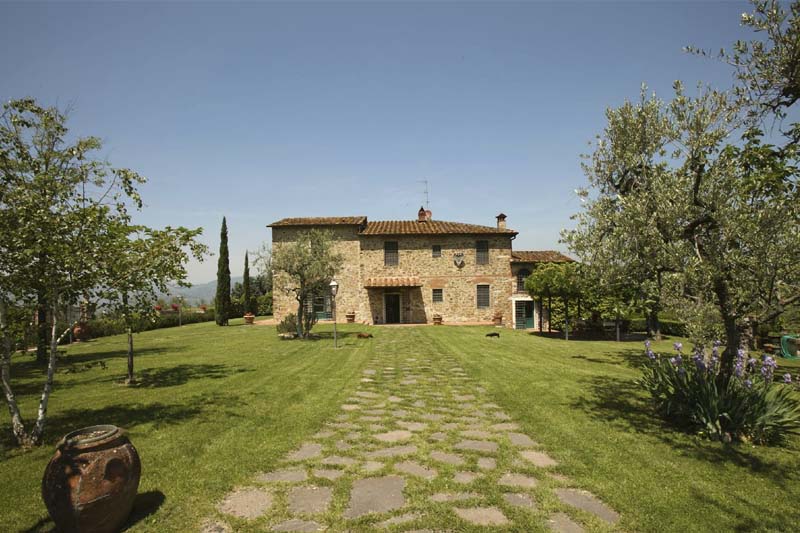
Villa in Tuscany, Italy. Surrounded by the manor estate (farmland).
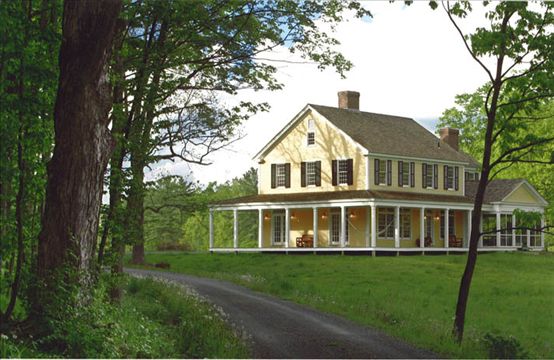
U.S. farmhouse, New England. Surrounded by dozens or even hundreds of acres of farmland.

McMansions on quarter-acre (or smaller) plots, United States.
As we know, this is an extremely stupid way to make houses in an urban context, for people who are not farmers.
March 7, 2010: Let’s Take a Trip to Suburban Hell
July 26, 2009: Let’s Take a Trip to an American Village 3: How the Suburbs Came to Be
July 19, 2009: Let’s Take a Trip to an American Village 2: Downtown
July 12, 2009: Let’s Take a Trip to an American Village
However, Asia has a much longer and broader tradition of small, single-family detached houses in an urban context, with dense spacing and also Really Narrow Streets, just like these mobile home communities such as Paradise Cove and Montauk Shores.
We’ve looked at some contemporary versions of this, in the “suburbs” (SFDR neighborhoods) of Tokyo. These neighborhoods, despite having single-family detached houses with yards and so forth, can easily reach densities of 30,000/mi2 or more, compared to about 9,000/mi2 for the denser examples of Suburban Hell in the U.S. context.
July 31, 2011: How To Make a Pile of Dough With the Traditional City 5: The New New Suburbanism
July 17, 2011: How To Make A Pile of Dough With the Traditional City 4: More SFDR/SFAR Solutions
June 12, 2011: How to Make a Pile of Dough with the Traditional City 3: Single Family Detached in the Traditional City Style
However, I thought I’d add to that some scenes of traditional, pre-1950 Japanese SFDR neighborhoods. This basic pattern is also common in places like China and Korea. You don’t see this much in Europe.
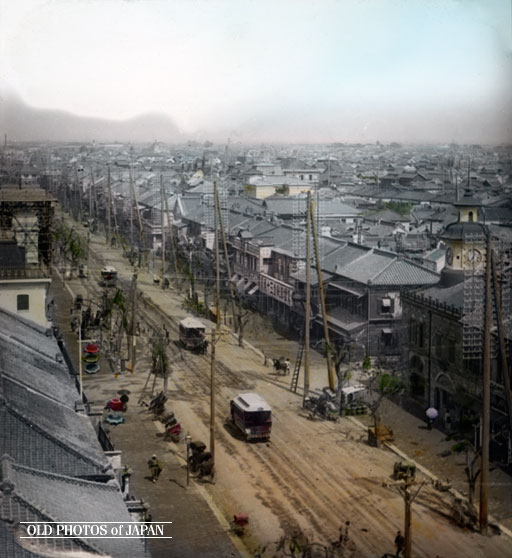
Ginza district, Tokyo, 1880s. A pattern of SFDR houses (mostly 2-3 stories) on Really Narrow Streets, and dense spacing.
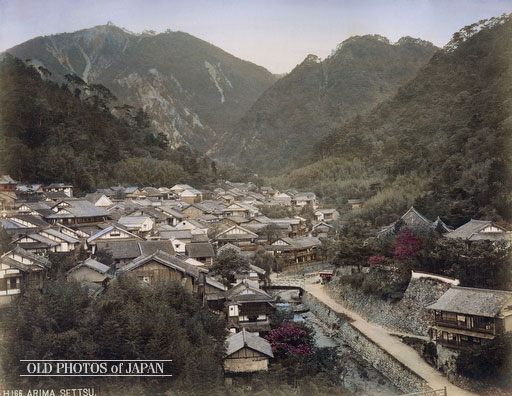
Arimo, Japan, 1890s. SFDR houses in a mountain village.
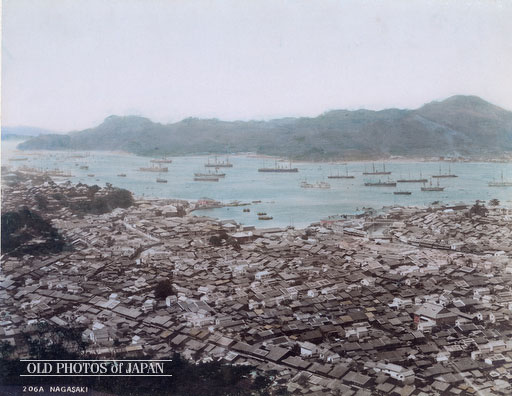
Nagasaki, Japan. 1890s. SFDR houses on Really Narrow Streets.
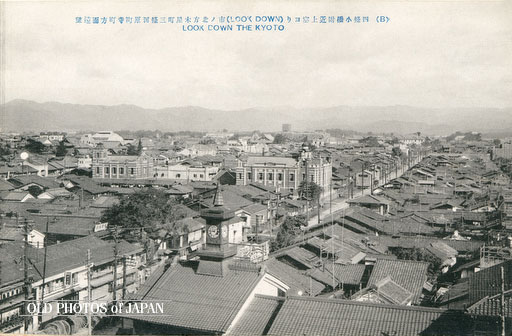
So, we see that the format that people naturally gravitate towards in the denser (i.e., higher land value) examples of a “mobile home community” are, in fact, very much like patterns used in Traditional City environments by a variety of cultures. The main difference I see is that people (in Japan for example) tended to use multistory construction, and smaller building footprints, rather than the one-story footprints common to manufactured housing. That might have to do with the “mobile” element — it is hard to flatbed a two-story house, although modular construction mitigates that. Instead of a “doublewide” that is attached together at the site, why not a “doublehigh”? For higher densities, you could go to 600sf plots, 400sf building footprints, and allow “doublehighs” and “triplehighs” of 800-1200sf for those who want that. It would still leave some room for a nice Japanese-style garden.
Click Here for the Traditional City/Heroic Materialism Archive

